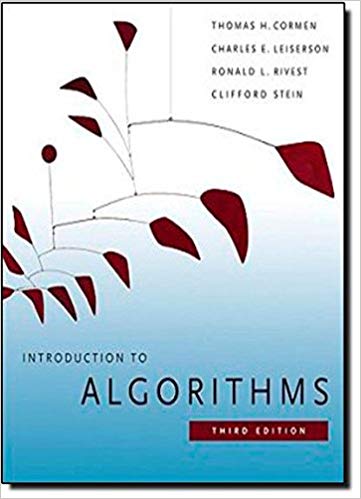Mapmakers try to use as few colors as possible when coloring countries on a map, as long
Question:
Mapmakers try to use as few colors as possible when coloring countries on a map, as long as no two countries that share a border have the same color. We can model this problem with an undirected graph G = (V, E) in which each vertex represents a country and vertices whose respective countries share a border are adjacent. Then, a k-coloring is a function c : V ? {1, 2, . . . , k} such that c(u) ? c (?) for every edge (u, ?) ? E. In other words, the numbers 1, 2, . . . ,k represent the k colors, and adjacent vertices must have different colors. The graph-coloring problem is to determine the minimum number of colors needed to color a given graph.
a.?Give an efficient algorithm to determine a?2-coloring of a graph, if one exists.
b. Cast the graph-coloring problem as a decision problem. Show that your decision problem is solvable in polynomial time if and only if the graph-coloring problem is solvable in polynomial time.
c.?Let the language 3-COLOR be the set of graphs that can be?3-colored. Show that if 3-COLOR is NP-complete, then your decision problem from part (b) is NP-complete.
To prove that 3-COLOR is NP-complete, we use a reduction from 3-CNF-SAT. Given a formula _ of m clauses on n variables x1,?x2, . . . ,?xn, we construct a graph?G?=?(V, E)?as follows. The set?V?consists of a vertex for each variable, a vertex for the negation of each variable,?5?vertices for each clause, and?3?special vertices:?TRUE,?FALSE, and?RED( The edges of the graph are of two types: "literal" edges that are independent of the clauses and "clause" edges that depend on the clauses. The literal edges form a triangle on the special vertices and also form a triangle on?xi,???xi, and?RED?for?i?=?1, 2, . . . ,n.
d. Argue that in any 3-coloring c of a graph containing the literal edges, exactly one of a variable and its negation is colored c(TRUE) and the other is colored c (FALSE). Argue that for any truth assignment for ?, there exists a?3-coloring of the graph containing just the literal edges.
The widget shown in Figure 34.20 helps to enforce the condition corresponding to a clause?(x???y???z). Each clause requires a unique copy of the?5?vertices that are heavily shaded in the figure, they connect as shown to the literals of the clause and the special vertex?TRUE.
e. Argue that if each of x, y, and z is colored c (TRUE) or c (FALSE), then the widget is 3-colorable if and only if at least one of x, y, or z is colored c(TRUE).
f.?Complete the proof that 3-COLOR is NP-complete.

Figure 34.20 The widget corresponding to a clause (x ? y ? z),
Step by Step Answer:

Introduction to Algorithms
ISBN: 978-0262033848
3rd edition
Authors: Thomas H. Cormen, Charles E. Leiserson, Ronald L. Rivest





